“”In true Toure style, the take-no-prisoners commentator went straight for the jugular and attacked Morgan face-to-face for not questioning Zimmerman about his comments regarding important moments of the night Trayvon Martin died. Of course, Morgan was having none of it and quickly became defensive, chiding Toure for MSNBC’s attempt to get Zimmeran Jr. on their network as well, and for the network’s running the interview in question all day without criticism.” — Daily Beast‘s Allison Samuels.
“Purfect With Thuh Chicken…”
I post this video every so often. It’s very calming. I love, love, love, love the way Chris Walken pronounces “chicken” and “pears.” Certain people says certain words perfectly, and I mean better than anyone else in the world. Walken saying “pears” (“peahrs“) is like Peter O’ Toole pronouncing “ecclesiastical.”
I visited Walken’s Upper West Side apartment twice in ’79. I had an excellent thing going with a lady named Sandra who was working for Walken and his wife as a kind of au pair or house-sitter. I remember the oriental rug on the living room floor, you bet, and the wood-burning fireplace in front of it. I don’t know why Sandra and I didn’t last for more than four or five weeks but it wasn’t for lack of interest on my part.
I ran into Walken at the Westport train station in the fall of ’78. This was two or three months before The Deer Hunter opened. I knew him only from his “whoa…who’s this guy?” performance in Paul Mazursky‘s Next Stop, Greenwich Village (’76). I saw him standing on the platform, I introduced myself, Walken was cool and easy, and we wound up talking all the way into Manhattan.
I spoke to him two years later when I went backstage at the Public Theatre after a performance of The Seagull, but he had no recollection of the train trip. Zip. I could have mentioned Sandra as an ice-breaker but I thought better of it.
The chicken-and-pears video was shot, I’m presuming, at Walken’s home in Wilton, Connecticut, which is where I lived for a few years and where I did my junior and senior years in high school. Paul Dano went to high school there also. And Keith Richards has a big home there.
Napoleon Hat
Many and perhaps most Americans who pay to see Tom Hooper‘s Les Miserables (Univeral, 12.14) will call it Lay Mizzruhbulls. This is how the girl with the mall accent will pronounce it when you call for showtimes on Moviefone. Gradually everyone will call it Lay Mizz, the default term for the B’way musical that ran from March 1987 through May 2003 (i.e., 6680 performances).
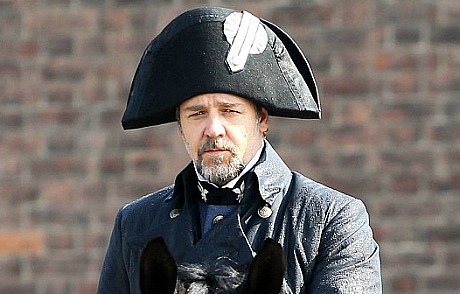
Russell Crowe as Inspector Javert during filming of Les Miserables.
The all-singing, all-dancing Les Miserables — “Layh Meezehrabluh” — began filming earlier this month with Hugh Jackman, Russell Crowe (as Inspector Javert — the Lieutenant Gerard of his day), Anne Hathaway, Eddie Redmayne, Amanda Seyfried, Sacha Baron Cohen and Helena Bonham Carter. Crowe tweets constantly about working out, and I must say he looks pretty good.
Les Miserables will basically be this year’s Sweeney Todd. It’s an all-but-guaranteed Best Picture contender along with Lincoln, The Master, The Great Gatsby, Gravity and Anna Karenina. Zero Dark Thirty and Hyde Park on Hudson are likely contenders also.
Fat Girl
Francis Coppola‘s “little fat girl from Ohio” quote has stuck for the last 21 years. Obit writers will, I suspect, include this along with Coppola’s great films — The Godfather movies, The Conversation, Apocalypse Now — and his winery and Zoetrope and everything else. Have any YouTube girls with the genius of Mozart sprung up since? I guess you could put Lena Dunham on this list.
I called Coppola cold at his Sherry Netherland suite one night in 1981. It was just before One From The Heart opened at the Radio City Music Hall in 1.33 to 1 — an event that 1.85 fascists are quietly seething about to this day. I taped the whole thing and ran the conversation as a q & a in two installments in The Film Journal, which I was the managing editor of at the time.
I was being a bit brash, of course, and I was definitely taking a political risk. Publicists can get very angry if you go around them. And you definitely didn’t want to mess with Renee Furst, who was Coppola’s flack at the time.
I’m now going to admit something that I’ve never admitted to anyone. I was buzzed on quaaludes when I called Coppola that night. Quaaludes loosen inhibitions, and this time they made me brash and cocky enough to just call him and say “hey, man” and keep him on the phone for roughly 90 minutes. (It might have been longer.) I’m not saying I would have chickened out without chemical fortification, but I might have…or I might have cut the call shorter out of politeness. Drugs and alchohol can and will kill careers, but this time — this one time — they helped mine.
Nail Polish
I felt deadness in the world when I woke up this morning and went online. An absence of action, no pulse…couldn’t get off the ground. Nothing. And then this arrived. I don’t post stuff like this ever, but now I’m alive again. I’ve got my heart beating. The source is some guy called Sidewalk Freak or Social Vagrant or whatever.
Bread On The Table
I’ve got a song stuck in my head again and I can’t kick it out. It’s been with me since last night when I was buying stuff at Pavillions. The only way to get rid of the constant replay in your head is to listen to the track over and over on your iPhone until you can’t stand it any more. And yet I love this track and Los Lobos in general. Fucking great guitar.
People Like Us
The trailer for Alex Kurtzman‘s People Like Us (DreamWorks, 6.29) suggests a James L. Brooks-like relationship drama about romance, values, happenstance. But what sticks is the sound of Elizabeth Banks‘ nasally voice in the intro. In the mid ’40s Howard Hawks told the struggling Lauren Bacall to lower her voice — to make it sound smokier and huskier. She did that and the rest is history. Banks needs similar guidance. Or she needs to de-nasalize, at least.
Back Into It
Tomorrow afternoon (Saturday, 3.31) in London, a reading of Orson Welles‘ script of Joseph Conrad‘s Heart of Darkness by actor Brian Cox (and presumably others) will be live-streamed starting at 5:30 pm. (9:30 am in Los Angeles, 12:30 pm in NYC.) The reading is being staged by artist Fiona Banner with the use of “a riverboat installation modelled on the Roi des Belges, the vessel Conrad captained on his journey up the Congo in 1890,” the Telegraph‘s Tim Robey reports.
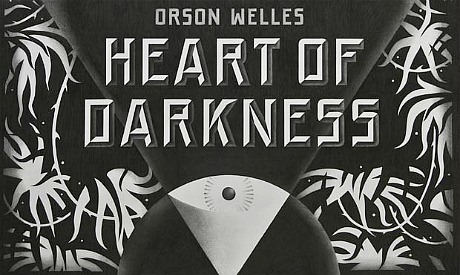
Heart of Darkness is the project that RKO, which had signed Welles to a two-picture deal, declined to finance in late 1939 or early ’40. The Wiki page says Welles “planned to film the action with a subjective camera (a technique later used in the Robert Montgomery film Lady in the Lake). But when a budget was drawn up, RKO’s enthusiasm cooled because it was greater than the previously agreed limit.” This and another RKO turn-down (a film called The Smiler With the Knife that would have starred Lucille Ball) prompted Welles to move on to Citizen Kane.
In tomorrow’s performance Cox will play — as Welles intended 72 years ago — both Marlow, the narrator-protagonist, and Captain Kurtz, the corrupt ivory trader who was transformed into Colonel Kurtz in Francis Coppola‘s Apocalypse Now.
What’s The Biggie?
As anti-Obama hitjobs go, this one is fairly clever. Then again, what’s so heinous about stating an obvious fact? If and when Obama is re-elected next November he will have more flexibility. He’ll have more freedom to do and say whatever the hell he wants. What do righties think he meant when he said this to Dimitry Medvedev? “Don’t worry, bro…after I’m elected I’ll capitulate all over the place and you guys can do anything you want”?
Superwad
The newly revealed Man of Steel logo (which looks like something mounted on the wall of an executive conference room) emphasizes the somber, downish tonalities first revealed in that August 2011 shot of Henry Cavill in his blue-gray Superman suit with the rose-colored cape and the knife pleats. But what about the decision by Man of Steel director Zack Snyder and producer Chris Nolan to have Cavill run around with a hard-to-ignore wad in his pants — a bull-elephant package that would make any Chippendale’s dancer envious?
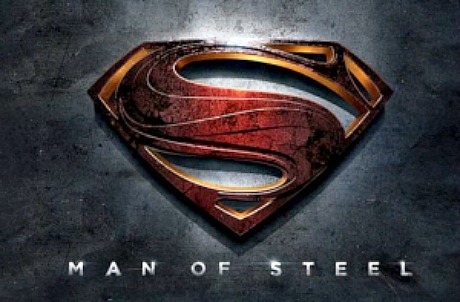
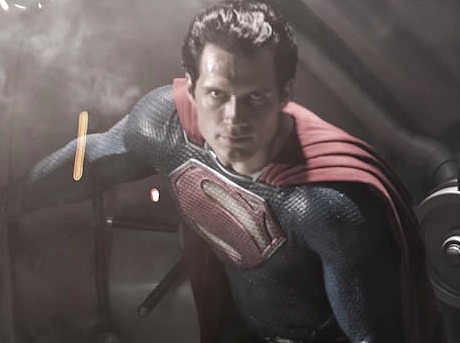
I don’t know how “big” all the other Supermans were (and I don’t want to know) but over the last sixty-odd years — from George Reeves to Chris Reeve to Brandon Routh — Superman has always worn a disciplined jockstrap that suppressed any hint of exceptional heft or tumescence. But that modest aesthetic is now out the window, I’d say, based on these photos.

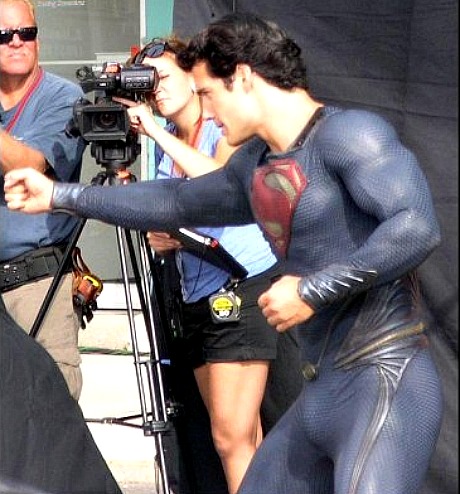
A decision has clearly been made to accentuate (or at the very least not hide) the fact that Cavill is well-endowed. That or he happened to be in a state of arousal when his shot was taken.
Man of Steel (Warner Bros., 6.14.13) costars Amy Adams as Lois Lane, Russell Crowe as Jor-El, Kevin Costner as Superman’s adoptive father and Laurence Fishburne as Daily Planet editor Perry White (“And don’t call me chief!”).
I for one feel Superman’ed out. Superman is yesterday’s superhero. Too innocent and upstanding and true-blue for our times. Introduced in the 1930s, ascended big-time with the TV series in the early ’50s, re-ascended with the Salkind-Lester films in the late ’70s and early ’80s, brought back yet again with the Bryan Singer version of 2006. It’s over. No steam left. Move on.

